Explore Shenzhen - China Travel, Asia
More than simply a technology giant, Shenzhen is a vibrant metropolis tucked away in southern China's Guangdong Province. Located just north of Hong Kong, Shenzhen has transformed from a small fishing village into a thriving metropolis, making it one of China's most vibrant cities. For tourists, Shenzhen offers an incredible mix of attractions—from stunning skyscrapers and shopping malls to traditional villages and lush parks. Whether you’re a history lover, a foodie, or an adventure seeker, Shenzhen has something to captivate every traveler.
Population: Approximately 17.5 million in 2020.
Economy: Shenzhen is the first Special Economic Zone (SEZ) and a symbol of China's open door policy for investments, businesses and talent worldwide.
Landmarks: Famous for Window of the World, Shenzhen Museum, and OCT Loft Creative Culture Park.
China

Overview of Shenzhen
History & Culture Influence
The story of Shenzhen is almost as stunning as its skyline. Within the span of a few short decades, Shenzhen has become the bright symbol of China's open door policy for investments, businesses and talent worldwide. The pace of this growth has had a profound impact on the culture of Shenzhen that blends traditional Cantonese roots with Western modern vibes. But, Shenzhen has maintained its cultural roots aside for the modern front it holds. From exhibitions in Shenzhen Museum to the Nanshan Mountains, Shenzhen preservation efforts offer a glimpse into China’s vast cultural heritage through replicas of famous landmarks and traditional performances.
Interaction with The Locals
Shenzhen is home to over 17.5 million residents, making it one of the most populous cities in China. The city’s population is incredibly diverse, with people from all across China and around the world. This cultural melting pot contributes to Shenzhen's dynamic atmosphere, blending traditional Chinese values with modern, global influences. Shenzhen's fast growth and reputation as a major tech hub are reflected in the city's well-known entrepreneurial spirit among its residents. Despite the fast-paced urban life, locals are friendly and welcoming, making it easy for visitors to feel at home.
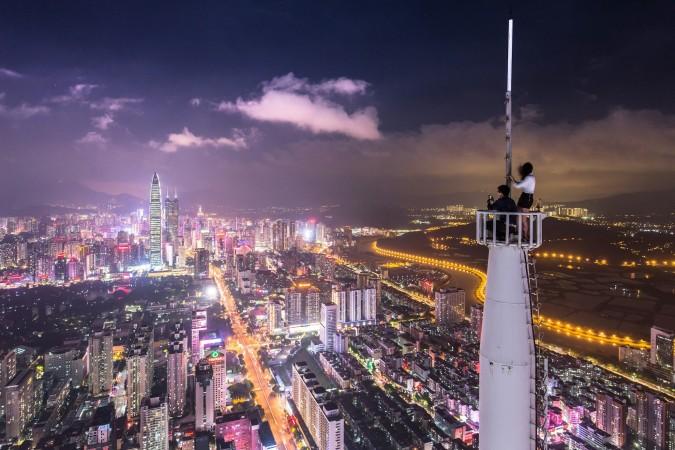
Shenzhen at night - © Denys Nevozhai
Top Attractions in Shenzhen
Shenzhen is a city of contrasts, where futuristic skyscrapers stand alongside ancient temples, and bustling markets thrive next to tranquil parks. Whether you’re seeking thrilling adventures, cultural immersion, or peaceful retreats, Shenzhen’s diverse attractions offer something for every traveler.
- Window of the World: Traveling the world without leaving Shenzhen is possible when you visit Window of the World. Miniatures of well-known global monuments, such as the Sydney Opera House, the Pyramids of Giza, and the Eiffel Tower, may be found at this theme park. It’s a fun, educational experience perfect for families and curious travelers alike.
- Shenzhen Museum: The Shenzhen Museum, which is situated in the heart of the city, provides a thorough look at the history of the area, from its beginnings as a fishing hamlet to its current position as a major worldwide metropolis. Exhibits include ancient artifacts, historical documents, and interactive displays that make history engaging for visitors of all ages.
- OCT Loft Creative Culture Park: Located in the Nanshan District, this former industrial area, a haven for art lovers and creative minds, has been transformed into a vibrant arts district, filled with galleries, studios, cafes, and boutiques. It’s a great place to explore contemporary art, catch a live performance, or simply soak in the unique atmosphere.
- Lychee Park: In the heart of Shenzhen, Lychee Park offers a peaceful escape from the city’s hustle and bustle. This lush green space is ideal for a leisurely stroll, a morning jog, or a relaxing picnic. The park is home to beautiful lychee trees, serene lakes, and traditional Chinese pavilions, making it a favorite spot for locals and tourists alike.
- Nanshan Mountains: If you’re an outdoor enthusiast, the Nanshan Mountains offer an excellent hiking opportunity right in the city. The trails are well-maintained and cater to various fitness levels, leading you through lush greenery and offering spectacular views of the city and the sea. There is a peaceful temple at the top of the gratifying trek to the mountain.
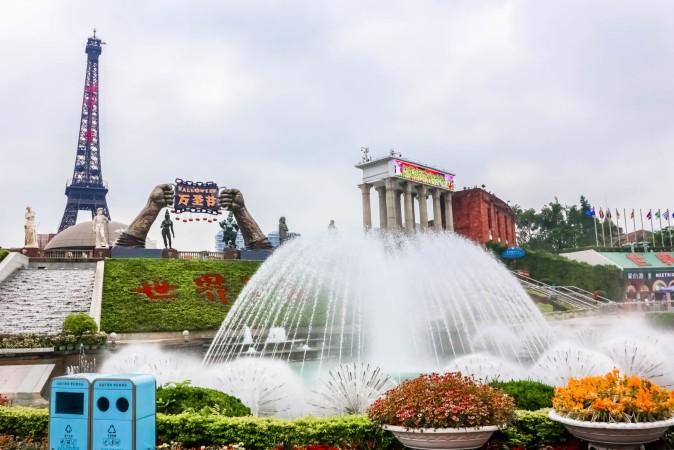
Window of the World - © VietnamNet
Must-Try Dishes in Shenzhen
Shenzhen’s culinary heritage is a flavorful fusion of traditional Cantonese cuisine and diverse regional influences, making it a paradise for food lovers. From street food to gourmet dining, the city offers an array of dishes that cater to every palate.
- Dim Sum: No visit to China is complete without experiencing Dim Sum. These bite-sized delights, often served in bamboo baskets, range from Har Gow (shrimp dumplings) and Siu Mai (pork dumplings) to sweet custard buns.
- Shao Wei (Roast Meat): Shao Wei refers to Cantonese-style roast meats, a must-try in Shenzhen. Popular choices include Char Siu (barbecue pork), Siu Yuk (crispy roast pork), and Roasted Duck. These meats are marinated in a rich sauce and roasted to perfection, offering a tender, juicy taste that’s hard to resist.
- Seafood Delights: Given Shenzhen’s coastal location, the city is famous for its fresh seafood. Don’t miss out the Steamed Fish with Ginger and Scallions, a simple yet flavorful dish that highlights the freshness of the seafood or Salt and Pepper Prawns, Steamed Scallops with Garlic Vermicelli, and Stir-Fried Clams with Black Bean Sauce.
- Poon Choi: Poon Choi is a traditional Cantonese dish often enjoyed during festivals. This large basin of layered meat, seafood, and vegetables is cooked and served as a communal meal, symbolizing abundance and unity. The rich flavors and variety of ingredients make Poon Choi a memorable culinary experience.
- Hakka Cuisine: Shenzhen has a significant Hakka population, and their cuisine is a key part of the city’s cuisine. Hakka Salt-Baked Chicken is a standout dish, along with Hakka specialty, Braised Pork Belly with Preserved Vegetables (Mei Cai Kou Rou), a comforting dish that pairs tender pork with savory preserved vegetables.
- Chaozhou Hotpot: For those who love spicy food, Chaozhou Hotpot is a must-try. Originating from nearby Chaozhou, this hotpot is known for its flavorful broth and fresh ingredients such as meats, seafood, and vegetables and the simmering broth, making it a communal and interactive dining experience.
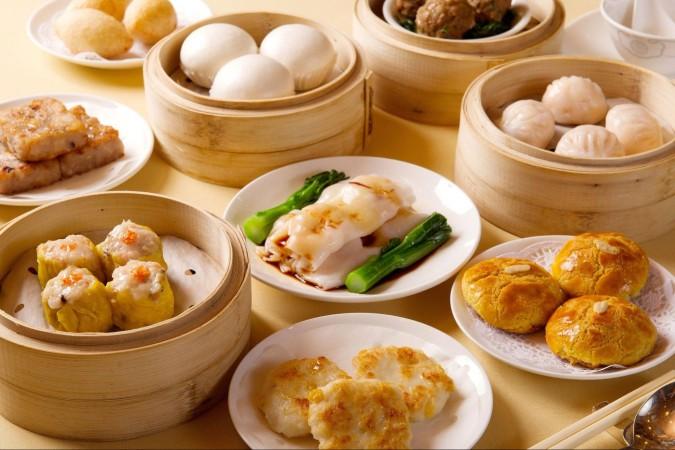
Dim Sum - © VnExpress
Festivals & Local Celebrations
Shenzhen’s festival calendar is as diverse as its population, offering a blend of traditional Chinese celebrations and modern cultural events. Participating in these festivals provides a unique insight into the city’s cultural fabric and offers visitors an opportunity to connect with locals in a festive atmosphere.
Chinese New Year
The Chinese New Year, or Spring Festival, is the most significant celebration in Shenzhen. The city comes alive with red lanterns, vibrant decorations, and the sounds of firecrackers. Traditional activities include family reunions, visiting temples, and enjoying festive meals. Public spaces host cultural performances, dragon dances, and firework displays, creating a lively and joyful environment for all.
Mid-Autumn Festival
The Mid-Autumn Festival is another key event in Shenzhen, celebrated with mooncakes and lantern displays. This festival, which falls on the 15th day of the eighth lunar month, is a time for family gatherings and moon gazing. Public parks and squares often host lantern festivals, where locals and tourists alike can admire the beautiful lanterns and enjoy cultural performances.
Shenzhen International Marathon
For sports enthusiasts, the Shenzhen International Marathon is a major event that draws participants from around the world. Held annually in December, this marathon takes runners through the city’s scenic routes, offering a unique way to experience Shenzhen’s urban landscape. Whether you’re a runner or a spectator, the event is filled with energy and excitement.
OCT-LOFT Jazz Festival
The OCT-LOFT Jazz Festival is a cultural highlight in Shenzhen, attracting jazz musicians and enthusiasts from around the globe. Held in the artsy OCT Loft district, this festival showcases a variety of jazz performances, workshops, and art exhibitions. It’s a must-visit for music lovers and those interested in Shenzhen’s creative scene.

Shenzhen International Marathon - © EYESHENZHEN
What to Do in Shenzhen
Shenzhen offers a wide range of activities for tourists, catering to all interests and ages. From thrilling theme parks to serene nature trails, the city’s attractions provide countless opportunities for exploration and adventure.
- Theme Parks Tours: Shenzhen is home to some of China’s most famous theme parks. Happy Valley Shenzhen and Window of the World are the most popular destinations, offering roller coasters, water rides, and live shows. Both parks provide entertainment for the whole family and are perfect for a day of fun.
- Hiking Trails in Shenzhen: The Nanshan Mountains offer picturesque hiking trails with panoramic views of the city and the sea. Wutong Mountain, Shenzhen's highest mountain, offers a route with verdant trees and calm streams.
- Explore Markets & Shopping Centers: Shenzhen is a haven for shoppers, with a mix of modern malls and traditional markets. All the shopping centers and markets in Shenzhen offer a wide range of products, from electronics to fashion. From luxury shopping experiences of high-end brands to street food tours around the traditional markets, the lively atmosphere might be what you are looking for.
- Experience Cultural and Art: Shenzhen’s cultural heritage is thriving, with numerous museums, galleries, and cultural parks with Shenzhen Museum offering insights into the city’s history and He Xiangning Art Museum showcases contemporary Chinese art.
Shopping in Shenzhen
Shenzhen is a shopping haven, offering a diverse range of retail experiences. Here’s a quick guide to the best shopping spots in the city:
- Luohu Commercial City: Located near the Hong Kong border, Luohu Commercial City is renowned for its wide range of products at bargain prices, from electronics and clothing to jewelry and souvenirs. It’s a great place for haggling and finding deals.
- Huaqiangbei Electronics Market: Huaqiangbei is the go-to destination for electronics enthusiasts. As one of the largest electronics markets in the world, it offers everything from the latest gadgets to components and DIY kits.
- COCO Park: COCO Park in Futian District is a modern shopping mall featuring international fashion brands, designer boutiques, and dining options. It's ideal for upscale shopping and taking in the exciting nightlife.
- Dongmen Pedestrian Street: Dongmen Pedestrian Street offers a mix of traditional markets and modern stores. It’s a lively area to shop for clothes, accessories, and local snacks while experiencing Shenzhen’s dynamic atmosphere.
- Shenzhen Night Markets: Explore Shenzhen’s night markets, such as Huaqiangbei Night Market and Dongmen Night Market, for a variety of street food, fashion, and souvenirs. You may purchase unique goods and get a taste of the local way of life at these markets.
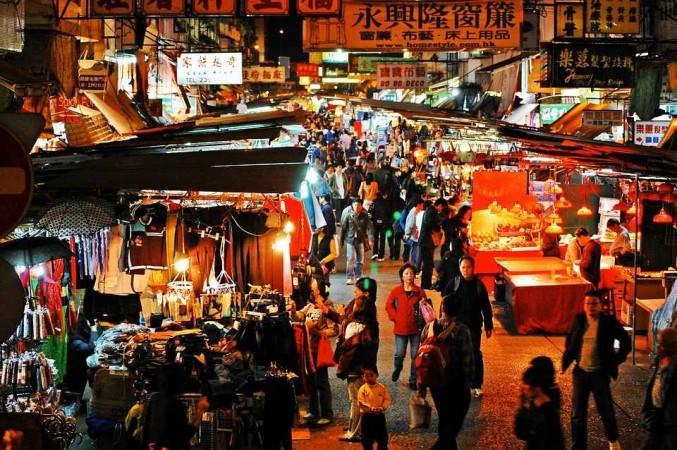
Shenzhen Night Markets - © China Tourism
Weather in Shenzhen: Best Time to Visit
Shenzhen’s subtropical climate ensures warm and humid conditions throughout the year, making it a year-round destination. Here’s a detailed look at the weather and tourism trends in this dynamic city.
Spring in Shenzhen
Spring in Shenzhen is mild and comfortable, with temperatures ranging from 18°C to 25°C (64°F to 77°F). The city is lush and blooming during this season, making it an ideal time for outdoor activities like hiking and visiting parks. Spring is also a popular time for festivals and cultural events, drawing tourists who want to experience the city’s vibrant atmosphere.
Summer in Shenzhen
Summer can be hot and humid in Shenzhen, with temperatures often exceeding 30°C (86°F). This season also brings occasional typhoons and heavy rains, so it’s advisable to carry an umbrella and stay hydrated. Despite the heat, summer remains a peak season for tourists, especially those drawn to Shenzhen’s beaches and water parks. The city hosts various summer festivals and events, attracting visitors seeking both relaxation and entertainment.
Autumn in Shenzhen
One of the greatest seasons to travel to Shenzhen is thought to be autumn. The weather is cool and dry, with temperatures ranging from 20°C to 28°C (68°F to 82°F). This season is perfect for exploring the city’s attractions and participating in outdoor festivals. Autumn also sees a rise in tourism due to favorable weather conditions, making it an ideal time for sightseeing and cultural activities.
Winter in Shenzhen
Shenzhen experiences warm winters, with lows of around 10°C (50°F). It’s a great time to visit if you prefer cooler weather, and the city’s parks and gardens remain green and vibrant. Winter is a quieter period for tourism, offering a more relaxed experience with fewer crowds. It’s also a good time to explore indoor attractions and enjoy the city’s festive holiday decorations.
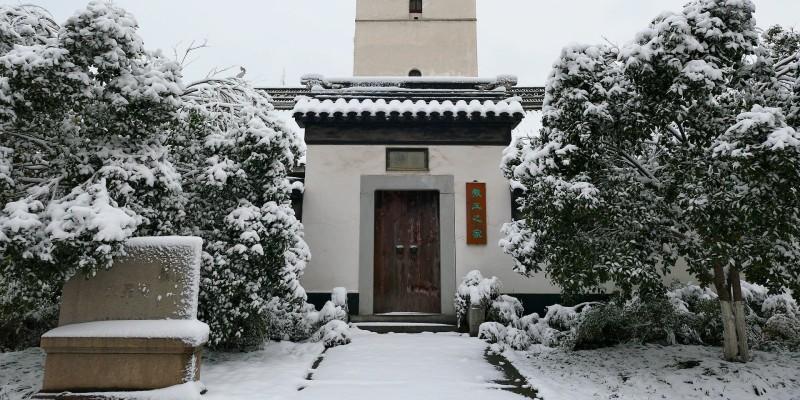
Winter in Shenzhen - © English1
Essential Travel Information
Getting Around Shenzhen
Navigating Shenzhen is convenient with its modern and efficient transportation options:
- Metro System: Shenzhen’s metro system covers key areas of the city, offering quick and efficient travel with frequent services.
- Buses: An extensive bus network connects various parts of the city, providing a cost-effective way to get around.
- Taxis: Taxis are widely available and provide a convenient option for door-to-door travel.
- Bicycles: Bike-sharing services are popular for short trips, offering an eco-friendly way to explore the city.
- Ride-Sharing: Ride-sharing services are also accessible for a comfortable and flexible travel experience.
ATM & Banking Services
Managing finances in Shenzhen is straightforward with numerous ATMs and banking services available throughout the city. ATMs are widely accessible and typically accept international cards, although fees may apply. Currency exchange services are easily found at banks and exchange counters, with competitive rates and required identification. For banking needs, various local banks offer comprehensive services, and mobile banking apps are popular for convenient transactions.
Where to Stay in Shenzhen
Shenzhen offers a wide range of accommodation to suit all budgets and preferences. For luxury seekers, high-end hotels provide top-notch amenities and excellent service. Business travelers can find well-equipped hotels with convenient facilities. Boutique hotels offer unique, personalized stays with local charm, while budget-friendly options ensure comfort without breaking the bank.
Articles for you

Explore Yala National Park - Sri Lanka Travel, Asia
Tucked away in Sri Lanka’s southeastern corner, Yala National Park is where wild nature meets deep tradition. Known worldwide for its leopard population, the park is also home to elephants, sloth bears, crocodiles, and hundreds of bird species. Beyond wildlife, Yala opens doors to a cultural landscape dotted with ancient temples, Buddhist ruins, and coastal villages. For travelers seeking more than just a safari, Yala offers a chance to explore eco-tourism, local communities, and sacred heritage sites.
Population: The Yala National Park area doesn’t have a human population.
Economy: The economy around Yala National Park thrives on a blend of eco-tourism, agriculture, and local services. Safari tours, eco-lodges, and cultural experiences drive steady income for nearby towns like Tissamaharama and Kataragama, supporting thousands of families.
Landmarks: Famous for Block I of Yala and wildlife encounters, including elephants, sloth bears, crocodiles, and exotic bird species.

Explore Galle - Sri Lanka Travel, Asia
Nestled on Sri Lanka’s southern coastline, Galle is a vibrant city where history meets the sea. Its cobbled streets, colonial architecture, and serene beaches make it a must-visit destination for travelers seeking a blend of culture, adventure, and relaxation. A UNESCO World Heritage site, Galle captivates visitors with its Dutch Fort, bustling markets, and friendly locals. Whether you’re exploring the ramparts at sunset or savoring fresh seafood by the shore, Galle promises an unforgettable journey into Sri Lanka’s heritage.
Population: Approximately 113,000 in 2023.
Economy: Galle’s economy thrives on tourism, trade, and fisheries. The city’s historic fort, colonial architecture, and coastal charm draw thousands of international visitors each year, making tourism its main economic driver. Fishing remains vital for local livelihoods, supplying fresh seafood across the region.
Landmarks: Famous for the Galle Fort, Dutch Reformed Church & Maritime Museum, and Unawatuna Beach.

Explore Bentota - Sri Lanka Travel, Asia
Nestled along Sri Lanka’s southwestern coast, Bentota is a tropical paradise that blends golden beaches, vibrant culture, and thrilling adventures. Famous for its calm waters, luxury resorts, and scenic river estuary, Bentota has become a top destination for travelers seeking both relaxation and authentic experiences. From serene beach walks at sunrise to adrenaline-pumping water sports, this coastal town offers a perfect balance of leisure and exploration. With its proximity to Colombo and Galle, Bentota is easy to reach, making it an ideal stop for both short escapes and extended holidays.
Population: Approximately 37,000 in 2023.
Economy: Bentota’s economy thrives mainly on tourism, which drives local businesses such as hotels, restaurants, and wellness retreats. The town also benefits from fishing, coconut cultivation, and handicrafts like wood carving and batik textiles. Many residents rely on the growing demand for water sports and Ayurvedic treatments, making tourism the backbone of both income and employment in the area.
Landmarks: Famous for Bentota Beach, Bentota River Safari, and Kande Vihara Temple.

Explore Mirissa - Sri Lanka Travel, Asia
Mirissa is a charming coastal town on Sri Lanka’s southern shoreline. Known for its golden beaches, turquoise waters, and vibrant marine life, it has become a must-visit stop for travelers exploring the island. Many come for whale watching, surfing, and sunset views at Coconut Tree Hill, but Mirissa offers much more than postcard beauty. The fishing boats you see anchored by the bay carry generations of stories. Local traditions, delicious cuisine, and a laid-back rhythm of life shape every visitor’s experience.
Population: Approximately 4,700 in 2023.
Economy: Mirissa’s economy is largely shaped by its coastal location. Fishing has long been the backbone of local livelihoods, with generations relying on the Indian Ocean for income. In recent decades, tourism has become the main driver of growth, thanks to whale watching, surfing, and beachside hospitality.
Landmarks: Famous for Mirissa Beach, Coconut Tree Hill, and Parrot Rock Bridge.

Explore Nuwara Eliya - Sri Lanka Travel, Asia
Tucked away in the Central Highlands of Sri Lanka, Nuwara Eliya is often called “Little England”. With its rolling tea plantations, cool misty mornings, and colonial charm, this mountain town feels like a step into another world. Travelers come here to breathe fresh air, walk through flower gardens, sip the finest Ceylon Tea, and enjoy a pace of life far from the island’s busy cities. Whether you’re drawn by scenic landscapes, heritage architecture, or the warmth of its people, Nuwara Eliya is a destination that blends nature, culture, and history in perfect harmony.
Population: Approximately 781,000 in 2023.
Economy: Nuwara Eliya’s economy thrives mainly on tea production, as it sits in the heart of Sri Lanka’s central highlands, famous worldwide for Ceylon Tea. The city also benefits from a growing tourism industry, attracting visitors with its colonial charm, cool climate, and scenic landscapes.
Landmarks: Famous for Gregory Lake, Hakgala Botanical Garden, and Victoria Park.

Explore Sukau - Malaysia Travel, Asia
Nestled on the banks of the Kinabatangan River in Sabah, Malaysian Borneo, Sukau is a destination where wildlife, culture, and conservation come together. Known as one of Asia’s top spots for river safaris and eco-tourism, this quiet village offers a front-row seat to encounters with Bornean orangutans, pygmy elephants, proboscis monkeys, and exotic birdlife.
Population: Approximately 1,400 in 2019.
Economy: Sukau’s economy is shaped by its riverine location and natural resources. Traditionally, the Orang Sungai community relied on fishing, small-scale farming, and forest gathering for their livelihood. Today, the village has shifted toward eco-tourism, with river cruises, jungle trekking, and homestays providing income.
Landmarks: Famous for the Kinabatangan River cruises, Gomantong Caves, and Ox-bow lakes and wetlands.
